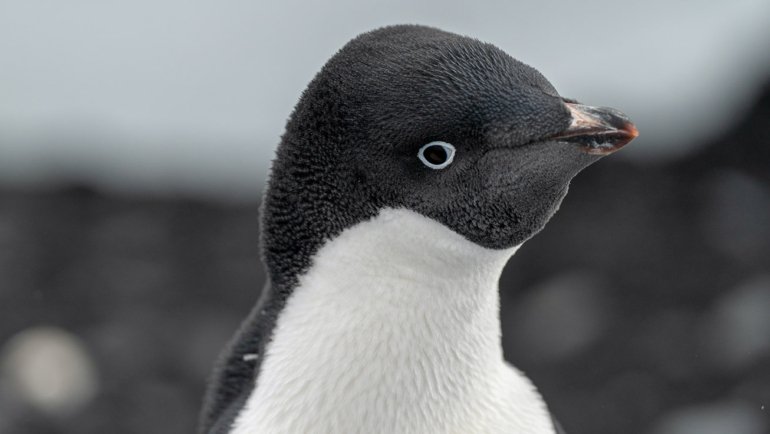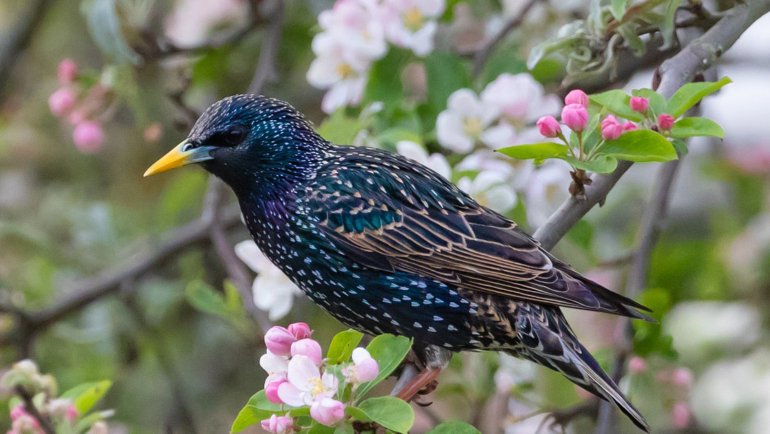Welcome to the enchanting realm of white parrots, where nature’s most social and intelligent birds show off their elegance in the purest color. These pristine parrots offer a breathtaking contrast to their more vibrantly hued counterparts, exuding an understated beauty and charm that captivates onlookers.
Whether spotted soaring in the wild or enchanting their human companions as pets, white parrots have a distinctive allure that makes them impossible to ignore. In this article, we will showcase six different white parrot species, each with its unique traits and fascinating stories.
White-Crested Cockatoo

- Scientific Name: Cacatua alba
- Size: 18 inches
- Lifespan: Up to 60 years
- Where Found: Northern Moluccas, Indonesia
The White-Crested Cockatoo, also known as the Umbrella Cockatoo, is one of the most recognizable white parrots. Its striking appearance — a largely white plumage and a large, backward-curving crest that opens out like an umbrella when the bird is excited or alarmed — makes it a standout in any setting.
Native to the tropical rainforests of Indonesia, the White-Crested Cockatoo is known for its sociable and affectionate nature. These birds form strong bonds with their flock members, including human caretakers, and require a lot of mental stimulation and physical activity. They’re known for their loud calls, which can be heard echoing through their native habitats and even in domestic settings.
Their diet mainly consists of seeds, nuts, fruits, and some insects. Though they have a long lifespan, White-Crested Cockatoos are threatened by habitat loss and illegal pet trade in their native land.
Did you know? Despite their endearing qualities, White-Crested Cockatoos can be quite the mischief-makers. They are known for their intelligence and curiosity, which can sometimes lead them to be destructive, especially when bored. It’s not uncommon for these birds to use their powerful beaks to explore their environment — including household items!
Yellow-Crested Cockatoo

- Scientific Name: Cacatua sulphurea
- Size: 13-15 inches
- Lifespan: Up to 70 years
- Where Found: East Timor and Indonesia’s islands of Sulawesi and the Lesser Sundas
The Yellow-Crested Cockatoo, also known as the Lesser Sulphur-Crested Cockatoo, is a small to medium-sized parrot with predominantly white plumage, contrasting beautifully with its bright yellow crest. Known for their spirited and lively nature, these birds have an effervescent personality that matches their visually striking appearance.
Primarily found in wooded and cultivated areas, these cockatoos can adapt well to modified habitats. They feed mainly on seeds, fruits, nuts, and berries, and will often flock to agricultural areas for food. Their piercing, loud calls resonate in their natural habitat, signaling their presence to all.
The Yellow-Crested Cockatoo is considered critically endangered due to the illegal pet trade and habitat loss. Efforts are ongoing to protect and conserve this beautiful bird species.
Did you know? The Yellow-Crested Cockatoo is known to be quite the acrobat! In the wild, these birds have been seen hanging upside down from branches and performing other aerial antics, much to the delight of birdwatchers.
Goffin’s Cockatoo

- Scientific Name: Cacatua goffiniana
- Size: 12 inches
- Lifespan: 40-60 years
- Where Found: Tanimbar Islands, Indonesia
Named after Dutch aviculturist Dirk Goffin, Goffin’s Cockatoo is a relatively small cockatoo species. Its white feathers, soft pink hue around the eyes and the base of the beak, and salmon-colored crest feathers give it an exquisite appeal.
These birds are highly intelligent, lively, and known for their problem-solving skills. In the wild, Goffin’s Cockatoos live in large flocks and spend their time foraging for food, which includes seeds, fruits, and insects.
Despite their friendly and endearing personalities, Goffin’s Cockatoos are considered one of the most challenging parrot species to keep as pets. They require a lot of mental stimulation and can be quite mischievous.
Did you know? Goffin’s Cockatoos are considered one of the smartest bird species! In a series of studies, these birds demonstrated the ability to solve complex puzzles and even use tools, a skill not seen in their wild counterparts – suggesting their problem-solving abilities are a product of individual exploration rather than social learning.
Lovebird – White mutation

- Scientific Name: Agapornis spp.
- Size: 5-7 inches
- Lifespan: Up to 15 years
- Where Found: Domesticated worldwide, wild in Africa
The White Lovebird is a color mutation of the lovebird species, most commonly seen in the Peach-faced Lovebird. These birds are small and short-tailed, making them one of the smallest parrot species. Although not naturally occurring, white lovebirds are quite a spectacle due to their pure, snow-like plumage, making them highly sought after as pets.
Lovebirds, in general, are known for their affectionate and social behavior. As the name suggests, they form strong monogamous bonds with their partners and prefer to live in pairs. They’re known for their playful, energetic nature and their love for interacting with their human caretakers.
White Lovebirds, like other lovebirds, eat a varied diet consisting of seeds, fruits, vegetables, and occasional protein sources like boiled eggs or cooked chicken.
Did you know? Lovebirds are known for their romantic behavior of sitting close and preening each other, which led to their common name. The bond between a pair of lovebirds is so strong that it’s often said that a lovebird will die of loneliness if left alone!
Indian Ringneck Parakeets – White mutation

- Scientific Name: Psittacula krameri manillensis
- Size: 16 inches (including tail)
- Lifespan: Up to 30 years
- Where Found: Domesticated worldwide, wild in Asia and Africa
The White Indian Ringneck Parakeet is a color mutation of the widely known Indian Ringneck Parakeet. With a sleek body and long, elegant tail, these birds are known for their striking appearance, especially the white mutation with its pristine white plumage.
The White Indian Ringneck Parakeet shares the same characteristics as its natural green counterparts. They are intelligent birds known for their exceptional talking abilities and distinctive, loud calls. These birds are active, love to climb and explore, and require a spacious cage to thrive.
In their natural habitat, Indian Ringneck Parakeets feed on a variety of seeds, fruits, flowers, and nectar. When kept as pets, a balanced diet of fruits, vegetables, seeds, and pellets is essential for their health.
Did you know? Despite their popularity as pets, Indian Ringneck Parakeets are considered sacred in their native India and are not traditionally kept as pets. Instead, they’re often free to fly around temples where they are fed by devotees.
Budgerigars – White mutation

- Scientific Name: Melopsittacus undulatus
- Size: 7-8 inches
- Lifespan: 5-10 years
- Where Found: Domesticated worldwide, wild in Australia
The White Budgerigar, often simply called a “budgie”, is a color mutation of the budgerigar species. These birds are small and compact, with a light, nimble flight. The white mutation budgie, with its snow-white feathers, is particularly striking and is a popular choice for pet owners around the world.
Budgies are social creatures and can be very friendly if raised with regular interaction. They are known for their playful and energetic nature and enjoy spending time out of their cage, playing with toys, or interacting with their human family members. They are also relatively easy to train and can learn to mimic human speech, whistle tunes, and perform tricks, adding to their appeal as pets.
A balanced diet for a budgie should include a mix of seeds, pellets, fruits, vegetables, and occasional protein sources.
Did you know? Despite being small, budgies have quite a large vocabulary. Some budgies have been known to learn hundreds of words, and one particularly talented budgie was recorded to know over 1,700 words! This makes them one of the best-talking birds per volume of size.
What Makes Parrots White?
The dazzling white color of some parrots is a result of a combination of factors, primarily genetics and the interaction of light with their feathers. Just like in other animals, pigmentation in parrots is a genetic trait, and a lack of melanin can result in white or lighter-colored feathers. Furthermore, some species of parrots have been selectively bred by humans for lighter or more vibrant colors, which has led to mutations such as the white budgerigar.
As for how their feathers appear white to our eyes, it’s all about how they reflect light. Unlike colors that absorb some wavelengths of light and reflect others, white feathers reflect nearly all light that hits them, resulting in a white appearance. It’s worth noting that white parrots are not albinos; they don’t lack melanin entirely but have reduced amounts of it, which is why their eyes, beak, and legs can still be colored.
Having white plumage might offer some parrots a strategic advantage in their environment. For instance, in light-colored surroundings or against a bright sky, a white coat provides excellent camouflage, helping these birds blend in and avoid predators.
Final Thoughts
As we conclude this journey through the world of white parrots, we hope that the variety and beauty of these feathered friends have left you as awestruck as we are. These species not only add a touch of brilliance to our homes as pets but also contribute significantly to the biodiversity and ecological balance of our world.
Whether you are a bird lover, a pet owner, or just a curious reader, we hope this exploration into the world of white parrots has given you a deeper appreciation for these remarkable creatures.





